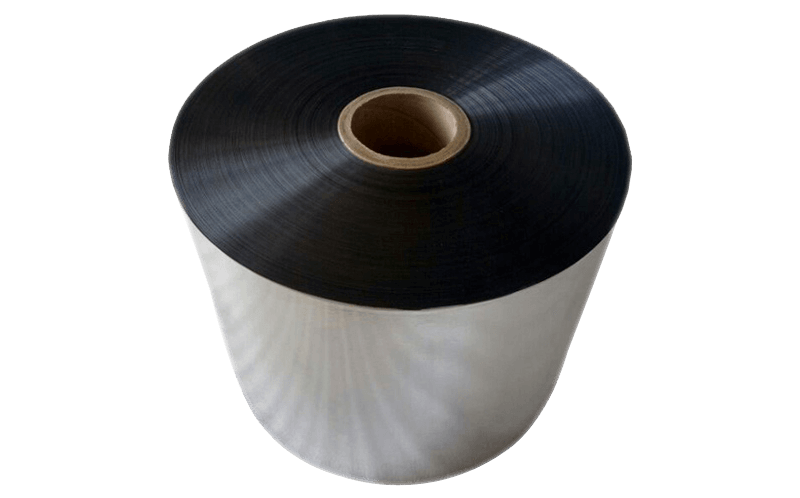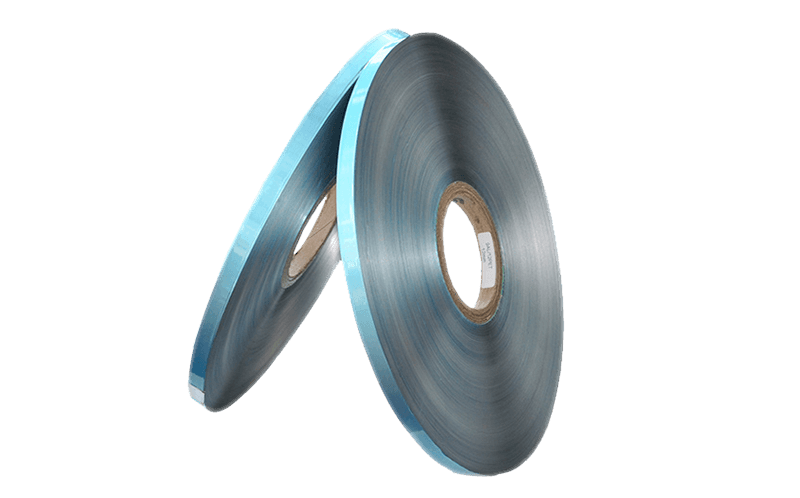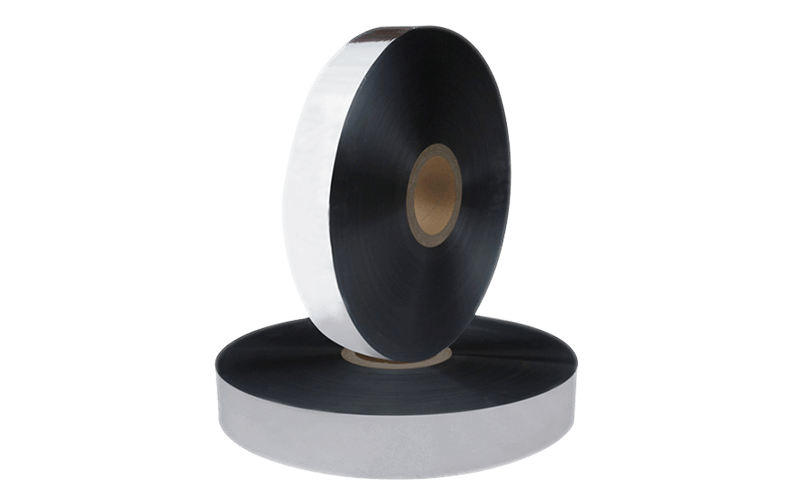Though you might not have had a term for the Metalized […]
Though you might not have had a term for the Metalized film material before, some major examples of metallized films are Mylar balloons, anti-static bags think of the sleeves your new computer components come in, as well as a variety of thicker snack, coffee, and candy packages. While food packaging applications are namely for decorative purposes to add a shiner edge in attracting customers over printed paper packaging or plastic films, metallized films have better controlled permeation that, in turn, extend shelf-life of the foods within.The new Lumirror MR20 polyester metal transfer film from Toray Plastics. gives brand owners of mass-produced products a luxury packaging option they may have previously thought was out of their league. Manufactured in-line in one step, Lumirror MR20 transfers the aluminum deposited on the film directly to paper or paperboard packaging, which generates high brightness. Recycling is an important feature of the new product too. After it is used in the converter’s transfer metallization process, the MR20 film can be returned to Toray for recycling. Plus, finished paperboard packaging can be recycled or repulped.What’s more is that the paper and cardboard products that have MR20 film exhibit excellent dead-fold properties, remain flat and smooth, do not delaminate or curl, and the metal does not flake off.” That last part is particularly important when using the material for food packaging; most people don’t like chewing on aluminum, after all.
The recycling and conversion of materials are not the only green and sustainable features of metallized films. Toray’s properity in-house, one-step manufacturing process allows end user to skip the extra steps used in the traditional converting process, so less materials and energy are used to produce the MR20 metal-transfer film,” Milan Moscaritolo, Toray’s Senior Director of Sales for their Lumirror films explains. “In addition, the transport of materials to and from others in the traditional supply chain is unnecessary, which contributes to additional energy and cost-savings.Less raw materials used means less costs across the board: “Manufacturers are able to put more material on skids, in truckloads, and on press. Transportation costs are reduced and manufacturing efficiencies are gained.Metallized film is also a prime food packaging material for its high barrier protection properties. When it comes to keeping out water and oxygen, the films only permeate cubic centimeters per square meter of the material a day respectively. You can use this comprehensive table to compare permeability rates between metallized films and a variety of plastics which, mind you, some aren’t even food safe, given their chemical composition.So why bother with metallized films, instead just going straight for the pure metal foils? While aluminum foil might be a sturdier material in comparison, metallized films, from a structural standpoint, still have a lot of benefits to enjoy.
There are two main problems with using aluminum foil for packaging: its dead-fold properties and its lack of flexibility as a material. By dead-fold, I mean that once folded, creased, or wrinkled, those blemishes become perfect. For packages that get tossed around and handled a lot in transit from manufacturer to retail shelf, that doesn’t make for the most attractive package to show off to potential customers. Moreover, puncturing aluminum foil is relatively easy; flex-cracking (that is, constant bending back in forth as the contents shift in transit or the package itself bumps and moves against things also is something to consider, especially when trying to keep food contents fresh and safe to eat.Metallized films negate both of these properties, both being flexible as well as enjoying the intrinsic strength of whatever polymer or paper they’re bonded to. In other words, they’re less brittle and can handle both blunt and somewhat sharp impacts a lot better than a metallic foil could. And because it doesn’t have the same memory properties of aluminum, there’s not much worry for permanent wrinkles or creases
.In the production phase, metallized films actually run through lines faster compared to heavier metal foils. Metallized films typically run at thinner gauges than standard gauge packaging grade foil,can be sealed at lower temperatures, permitting increased line speeds.On the topic of sealing, with the lack of aluminum hydroxide typical of aluminum foils that have come in contact with water which in turn makes for a poor adhesive surface for lamination, metallized films naturally seal better and, due to better performance mean less sealant is needed. All of these factors quicker line speeds, less energy expended on sealing, and less sealant needed to secure the bond mean more money saved for the manufacturer on top of a more efficient process.So for those of you out there in the market for a new packaging material that not only looks great on the shelf, but requires less money and energy to manufacture, consider switching to metallized films. With all the benefits, from cost-effectiveness to food safety and attracting the attention of a customer’s wandering eye, this packaging material is certainly a feat of modern engineering. Who would have thought bonding metal to polymers and paper could be such a boon to the industry?



